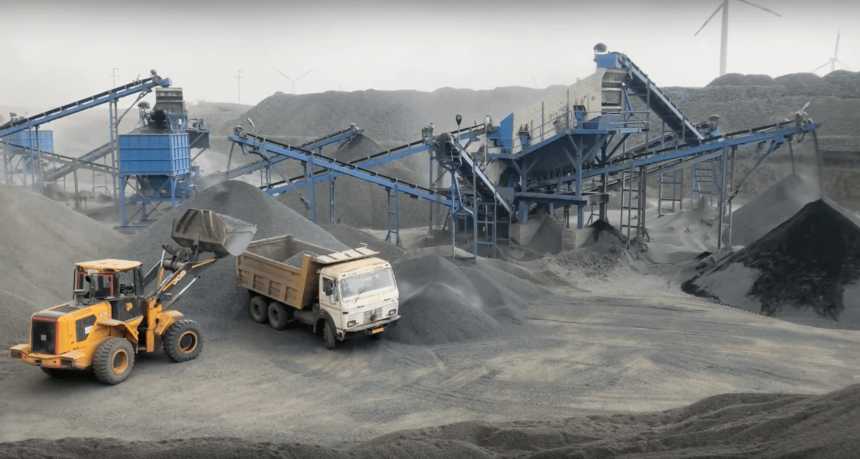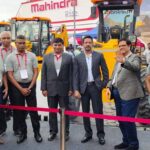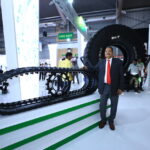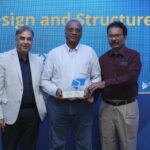There is a rising demand for aggregates, particularly from the road sector, which bodes well for the crushing business as construction operations are in full swing and several expensive infrastructure projects are underway.
The demand drive for crushers and screens, particularly bigger capacity facilities, is anticipated to be sparked by greater public spending on infrastructure, increased private participation, and enormous production targets in the coal and mining sector. The industry is optimistic about the increase in demand, which bodes well for the suppliers because a sizable portion of infrastructure in many areas still needs to be completed. The numerous road projects that have been awarded have mostly been responsible for the 15-20% growth rate of the C & S business in recent years. The mining industry has yet to take a step in the direction of expansion. The industry forecasts the CAGR in the aggregate sector, which is the primary driver of growth, to be +25% whereas mining may only have a 10% CAGR.
Manufacturers of crushers have high expectations for better days
The demand for plants is gradually increasing, albeit modestly, according to makers of crushing and screening plants, who have experienced a protracted period of commercial recession for the previous two years. The acquisition of new units is due to new operations in the infrastructure and quarrying industries. The demand is anticipated, but manufacturers are unsure of how long it will last. Through fresh launches, they are preparing to handle the various needs that the new demand order may bring up.
Manufacturers of crusher and screening plants, who had been suffering from the extended decline in iron ore mining caused by the ban, were jubilant following the Supreme Court’s recent decision to lift the ban on iron ore mining in Goa and establish a 20 million tonnes cap on mining. Manufacturers are also pleased with Steel Authority of India’s significant expansion. The PSU giant recently put into operation a new blast furnace at one of its facilities in Eastern India, necessitating improved iron ore processing.
The targeted completion of Tata Steel’s and Bhushan Steel’s Kalinganagar mega-steel plant in Odisha, as well as the ongoing planned expansion of other secondary steel plants in West Bengal and Jharkhand, are further factors contributing to the improvement in business sentiment. An additional factor contributing to the improved business climate for both the producers of tracked and wheeled plants is the expansion of more recent road projects in the country’s North Eastern region, which call for the construction of roads through blasting, drilling, and crushing.
Manufacturers have reported receiving more orders, so the recent uptick in business mood is not entirely without foundation. Both the railway ballast and the aggregate parts for road development have placed new orders. The demand trend is expected to turn up, but manufacturers are unsure of the size of the offtake and how long it will last.
The sector is likely to experience an increase in competitiveness as manufacturers scramble to fill any gaps in demand that may arise as a result of the good business confidence. Manufacturers will accelerate the introduction of modern solutions in an effort to compete in a new round of markets.
Trends driving the crusher equipment industry
Tracked crusher for road construction work
Due to its improved fuel efficiency and lower maintenance costs, the Diesel-Electric Tracked Crushers offer higher productivity at a lower cost per tonne. Modern vehicles have self-driving capabilities, cutting-edge technology, and full functionality. This equipment can reach any location in the workplace regardless of the terrain, which reduces the amount of labour required to move the material. In addition, it is practical to fully support the coordination of mechanical equipment. It is simple to mount the crusher to a trailing vehicle and transport it to the operation site with the use of a wireless remote. The equipment can start working as soon as it arrives at the operational site because it doesn’t need to spend time being assembled.
Crushers with multi-cylinder hydraulic cone systems
By switching out body liners and adaptors, the new hybrid cone crusher models can be used in secondary or tertiary crushing stages of crushing plants. It has two hydraulic cylinders that have a protective effect so that if one overloads, the other can quickly react to clear the choke just by remote control. It also has an automatic control and fingertip manipulation system. After passing through the cavity, the crushed material is released at the machine’s base. In the aggregate industry, mining operations, and recycling applications, cone crushers are common rock crushing equipment. In secondary, tertiary, and quaternary crushing phases, they are typically employed.
Crusher with ‘hammer- rock’ configuration
The so-called rock-on-rock crushing technique is fully utilised by modern vertical shaft impact crushers. The crushable material is fed into vertical shaft impact crushers through the rotor’s centre, where it accelerates to a high speed before being ejected through apertures on the rotor’s periphery. The material is crushed when it strikes the outer body quickly and when rocks bump into one another. Vertical shaft impact crushers are typically used as the final stage of the crushing circuit, mostly in the aggregate production and construction industries, but they can also be used in the mining industry to prepare material feed for grinding mills.
Crusher for the rigid surface to compress and break large rocks
The new crusher essentially comprises a long spindle with a head made of strong steel that is conical in shape and seated in an eccentric sleeve. The spindle is suspended from a “spider,” and when it rotates, typically between 85 and 150 rpm, the gyratory action of the eccentric sweeps out a conical path within the fixed crushing chamber, or shell. High throughput and little downtime are provided by these crushers to maximize operation efficiency. With recent developments, the primary gyratory crushers can operate at faster speeds, with more installed power, and with mechanical improvements. These factors all work together to increase the throughput of your first gyratory crusher.
Conclusion:
The more recent types of this crusher produce high-quality, cubical aggregates with greater soundness. The more recent types of this machine are powered by a low-speed synchronous motor with a peripheral large gear or a motor with a speed reducer and large gear. New models have been developed with mobility and adaptability in mind, and many companies are now providing new choices including electric and hybrid propulsion systems.








